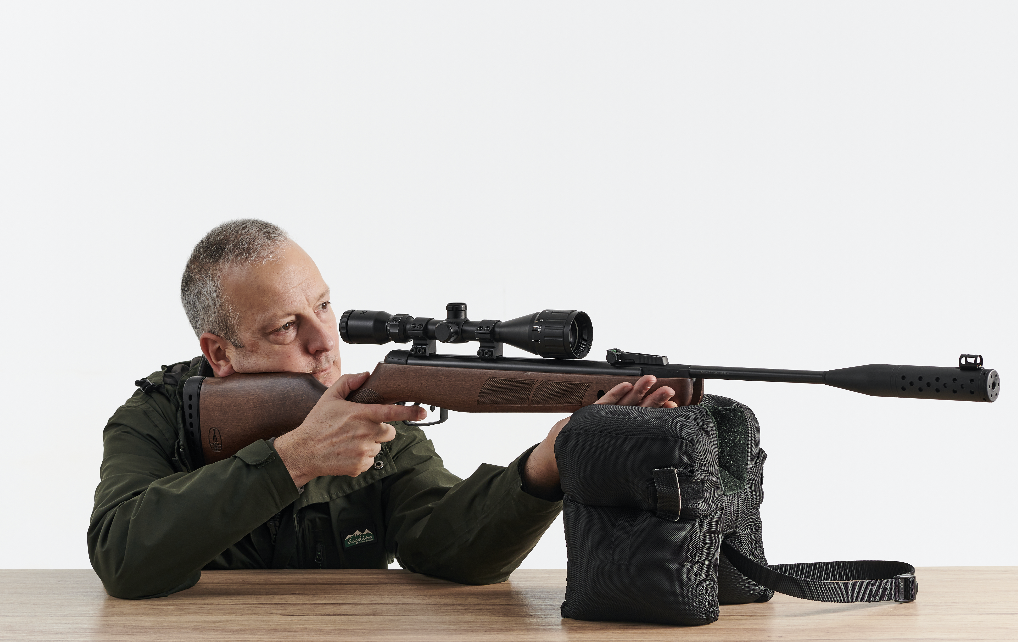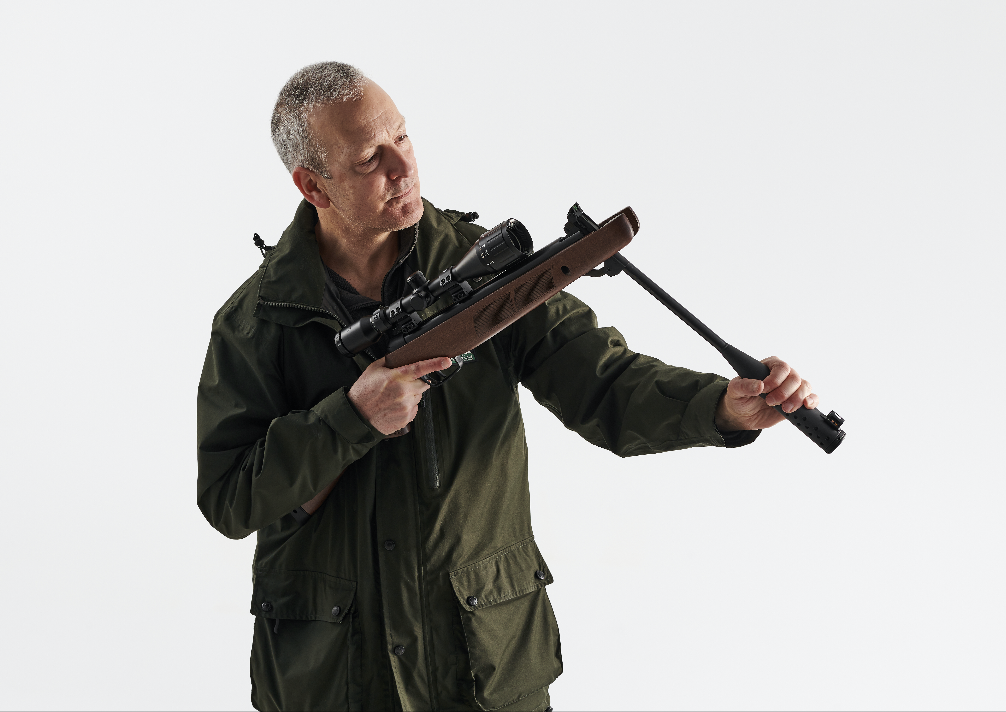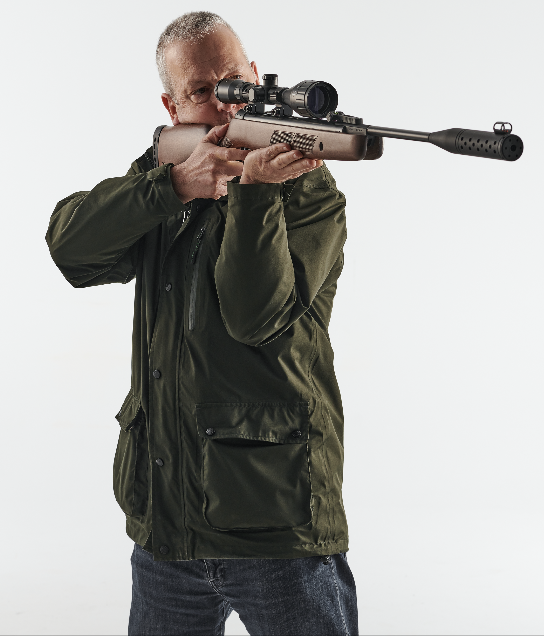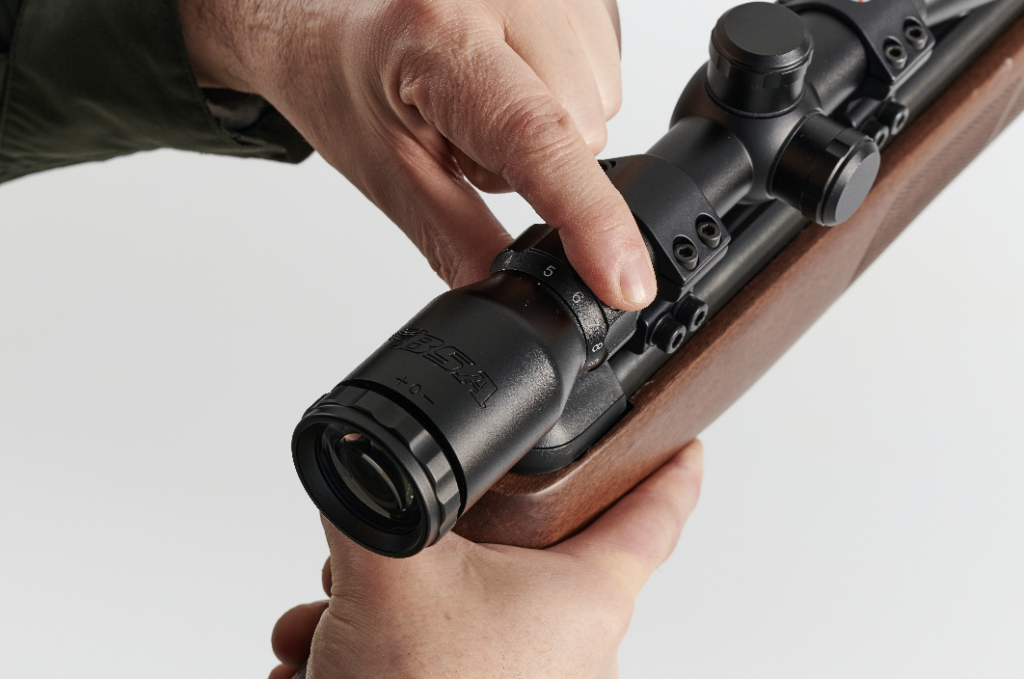Springers and gas-rams aren’t always easy to master for the newcomer, so Mike Morton offers some airgun springer advice to help turn recoil into reward
When considering airgun springer advice, there’s one question you have to ask first: what’s the difference between a springer and a PCP? Recoil! This can adversely affect the way a shooter interacts with their rifle, and this will affect their results on target. But unlike pre-charged pneumatics, springers and gas-rams offer a simpler form of self-contained shooting, with no filling devices or hoses to worry about. (Deciding between springer or PCP? Check out our breakdown).
I suspect there are plenty of shooters who, like me, prefer to shoot a PCP. But that’s simply down to the fact that PCPs are easier to shoot, so I get better results with them and therefore kid myself I’m a better shot.
Of course what makes me a better shot is that I shoot my springers on a regular basis in an attempt to hone my basic techniques. And because springers are harder to shoot, that makes them all the more rewarding when everything comes together. Springers do need to be treated a bit differently though, and certainly with respect, so here are a few pieces of airgun springer advice that have helped me raise my game.
- Click here for more on what to expect when you buy your first PCP airgun
Choose The Right Rifle
It‘s very easy to let ourselves be seduced by a rifle, not just by the way it looks or the type of stock material that’s been used, but also by the way that it performs in the hands of other shooters.
When you see someone drop a 45-yard plate or print a tiny five-shot group, you know that the gun is capable of doing great things. However, while many spring-powered rifles are superbly accurate to shoot, you will never get the best possible results from any particular gun unless it’s actually the right one for you.
Above: some break-barrels need a tap to release the detent, while others will let you swing then down more freely during the cocking stroke
But what is right for you? Weight can be a factor. Some springers are heavy, and while weight can be used to your advantage in certain situations – a heavy rifle can be beneficial for target shooting – if you can’t physically manage a heavy gun then you’re unlikely to shoot it to the best of your ability.
Of even more importance than weight is gun fit. A well-fitting gun should let you adopt an instant and natural aim whenever the rifle is shouldered, without the need to shuffle your head into position to get a better sight picture. Gun fit is also a function of the type of sighting system chosen, be it open sights or a telescopic sight, so bear this in mind too.
Gun fit is also a key factor with pre-charged pneumatics, but because of their largely recoil-free firing cycle they are extremely forgiving of poor gun fit. Springers are not.
Choose The Right Scope
The trick with any rifle, but springers in particular, is to match the features offered by the scope to the type of shooting you intend to do. And in the case of springers, that includes their physical size.
Large scopes definitely have their uses, but it’s crucial to know when and where to use them. (Thinking about buying a new scope? Check out our top picks here, or here if you’re looking for best scopes for pest control).
If you try to put a scope that’s overly long on a break-barrel, the objective bell may overhang the barrel’s pivot point.
This means you will not be able to cock the gun as the breech will hit the underside of the scope as the barrel is pulled down.
Longer scopes can also pose a problem for underlevers. If they overhang the loading bay, it’s difficult to see the breech, let alone manipulate a pellet into place. It can be done, but it’s an unnecessary complication.
Another factor to consider is the level of magnification. If you look through the scope you will see the crosshairs dancing around your point of aim rather than laying solidly in place on top of it.
This is called scope wobble. Unless a rifle is being fully supported, it will always be present. Some shooters use this to their advantage, while for others it’s off putting. This can be lessened by turning down the level of magnification.
Cock Safely
When a spring-powered rifle is cocked, the mainspring is compressed, creating a huge amount of pent-up energy that’s waiting to be released when the trigger is pulled.
Any premature release of the spring during the pellet-loading phase, either through mechanical failure or a careless trigger finger, can cause the barrel, underlever or compression tube to snap shut violently, causing severe damage to either the rifle, the shooter or both.
The barrel or underlever should be kept under full control when the pellet is being loaded into the breech and the barrel or lever then returned to the starting position.
If the rifle has a manual safety then you should apply it, but don’t rely too much on this or any other mechanical devices such as automatic safeties or anti-bear traps to keep you out of harm’s way.
Personally, I like to keep hold of the barrel or lever with one hand while tucking the gun under my arm, leaving my other hand free to seat the pellet safely.
Another option is to pull down on the barrel or lever just enough to expose the breech so you can seat a pellet while the rifle is still in an uncocked state. The rifle can then be cocked normally.
While the built-in safety mechanisms shouldn’t be relied on in their entirety – after all, the best safety catch on your airgun is the one between your ears – learn how to disengage and re-engage the safety if the shot is not being taken.
In the case of an automatic safety, that’s just a case of going through the cocking cycle again to force the catch to reset itself.
Hold It Gently
Cartridge rifles exhibit recoil, but while the force is directed one way when a bullet is fired, back into the shooter’s shoulder, springers recoil both backwards and forwards, going through several cycles before coming to rest. This violent phase must be properly managed if shots are to land where intended, and that management must be consistent in order for the next shot to behave the same way as the last.
Recoil management with springers comes down to the way they are held. A light touch is usually all that’s needed, and that means enough to hold the rifle steady. There must be some magical property about human flesh, because even with gloves, the firing cycle, however violent it may feel, is nice and consistent as long as you are maintaining a light hold.
It might seem more natural to try to control the rifle by adopting a firmer hold, but a death grip will have the opposite effect. The rifle will not recoil the same way, and point of impact will be inconsistent.
Most people will just adopt a more relaxed version of their normal hold when shooting a springer, but there’s a target-focused type of hold called the Artillery Hold that can work well in the field as well as at the range.
This involves laying the forend of the rifle into the flattened palm of the leading hand – placing it just in front of the trigger guard offers the most skeletal support. The idea here is to let the gun recoil over the hand like an artillery piece recoils in its carriage. Give it a go and see if it works for you.
Learn How To Take Rested Shots
The recoil generated by the release of a shot from a springer also needs to be managed if you intend to take a rested shot from some sort of support. The objective is again to allow the gun to recoil consistently each time, which will translate to better accuracy.
For this reason shooting bags, shooting sticks and natural supports such as a fence post, gate or branch need to be approached with caution. But all that’s needed is to place a barrier between the support and the gun, and that means your leading hand.
Just like a light hold, the idea here is to let the rifle move smoothly in your hand during the firing cycle, where the recoil pattern should be consistent, rather than the gun sliding directly over the support.
There are always exceptions to this, and I’m aware of plenty of shooters who have great success shooting their spring rifles while directly resting them on some sort of support.
I know a feral pigeon pest controller who happily sets his springer directly on a gate and gets repeatable, humane kills, and a fellow target shooter who rests his gun on a shooting bag with effective results.
It’s not for me though. I’ve experimented on paper targets using both of these methods without success. But that doesn’t mean it won’t work for you.
So as always it’s a good idea to try something new and see whether or not it’s worth adapting your technique.
Choose The Right Pellet
Because a PCP can be supported by using a bipod or shooting bag, it’s fairly easy to see how a particular pellet behaves in that gun by shooting a few groups. This is admittedly a little harder to achieve with a springer, but is still possible.
In general, due to the way the blast of air is delivered to the back of the pellet, springers prefer lighter ammunition while PCPs work well with heavier projectiles. My lightweight favourite in .177 is JSB Exact Express, which has an advertised weight of 7.87 grains. It’s very unusual to find a universal pellet that works well in any gun, but this particular ammo does seem to work well for me in my small-calibre springers.
However, I suspect this is simply because my own springer shooting technique is not up to scratch and that makes it hard to see much difference when switching to a different pellet. Regardless, this pellet works well for my needs. You’ll have to experiment to find the one that works best for you.
Check Screws Are Tight
It’s time to mention the R word yet again – recoil. Another adverse effect of recoil is its ability to loosen fastenings, so take the time to check everything is properly tight.
Stock screws and scope mounts are particularly prone to being shaken loose, so these need to be checked on a regular basis. The seasonal swelling of a wooden stock as it variously absorbs moisture and dries out can also work screws loose. Be careful not to overtighten forend screws that fasten directly into the wood, otherwise you may end up cracking it.
Make Every Shot Count
While multi-shot springers and gas-rams do exist, Gamo’s Swarm series of magazine-fed rifles being a case in point, most recoiling rifles are single-shot only. This, combined with the fact that cocking and loading a fresh pellet takes a fair bit of time and effort, means a significant investment has been made on behalf of the shooter to make that rifle ready for firing.
So make every shot count. That means slowing everything down and focusing on the pellet that’s in the breech. Pretend there’s no follow-up shot (and in practical terms, there usually isn’t) and everything hinges on making that one shot as perfect as possible. It’s a total mind game, and it’s a radical departure from the fast-fire fun most of us are used to with CO2 guns or even PCPs.
Don’t beat yourself up with failure; just learn from your mistakes. I learn an awful lot every time I pick up a springer by turning negatives into positives.
Practise Shooting Your Springer
Watching some YouTube videos of people shooting springers, you might be forgiven for thinking they’re all expert shots. Some are. But not all. And those that are genuinely good have probably obtained their high level of skill through natural talent and plenty of effort – and that means spending time on the range.
I know a few target shooters who shoot every day. We don’t all need to shoot as much as that in order to improve, but shooting a springer well is definitely something that comes with plenty of practice.
One potential problem arises when a shooter reaches their desired level of achievement then switches to a PCP. Hopefully the good habits and techniques that were learned with the springer will stay with them. If not, it’s time to put the PCP back in the cabinet and go back to mastering that mainspring.

Be Realistic
One final tip I’d like to share which I firmly believe will help people’s long-term enjoyment of springer shooting is to have realistic expectations about what they and their springer are capable of.
Over the years, I’ve seen plenty of people try their hand at shooting a springer, only to give up almost immediately when they don’t get the perfect results that they’re looking for.
Maybe it’s something to do with the instant gratification of modern society. Whatever the reason, springer techniques will develop and mature over time, and in order to keep shooting long enough for that process to take effect, people need to be reassured that they are making progress.
Give yourself some early victories that do demand a bit of work from you, but are still attainable. So instead of starting out at 30 yards and expecting to shoot one-hole groups on paper, set out a spinner at 15 yards and shoot that instead.
If you’re a member of a club whose members shoot only standing unsupported, try taking a rested shot instead. In no time at all you’ll master these simpler challenges and will yearn to take on something more demanding. So what are you waiting for? It’s time to spring into action!







